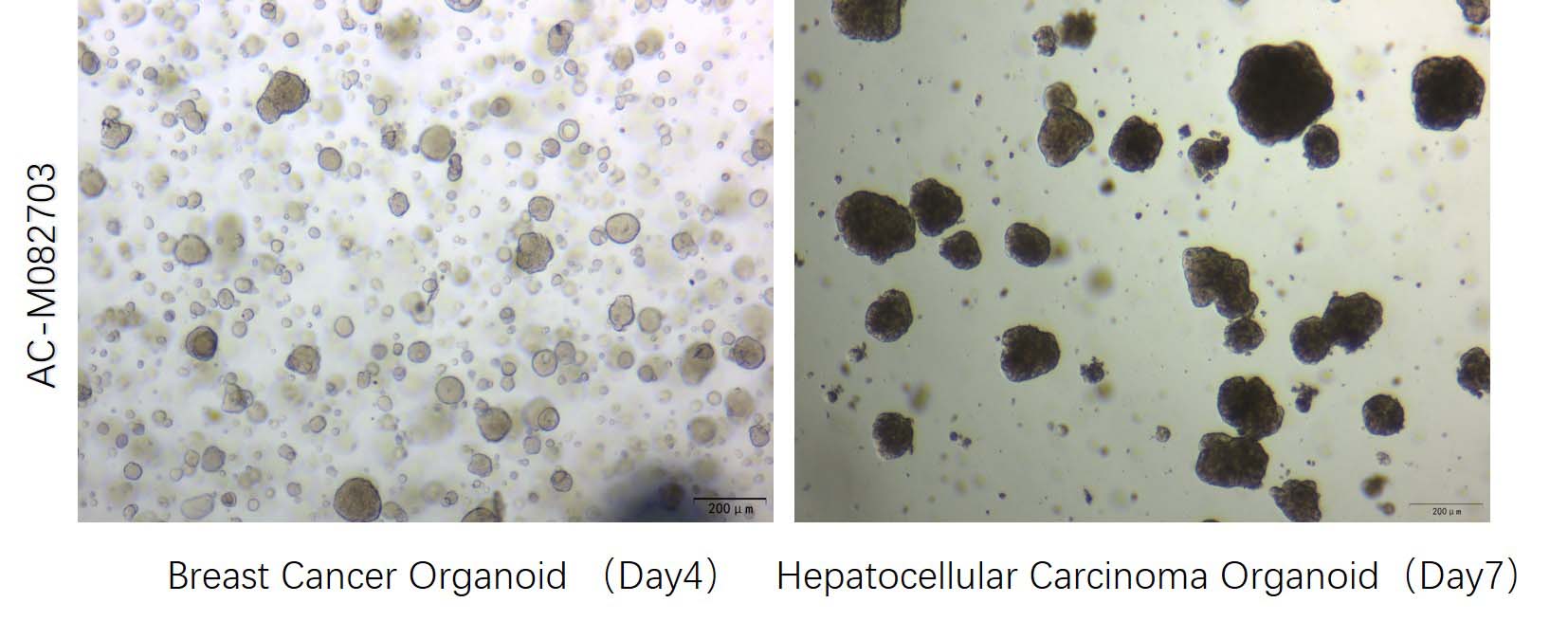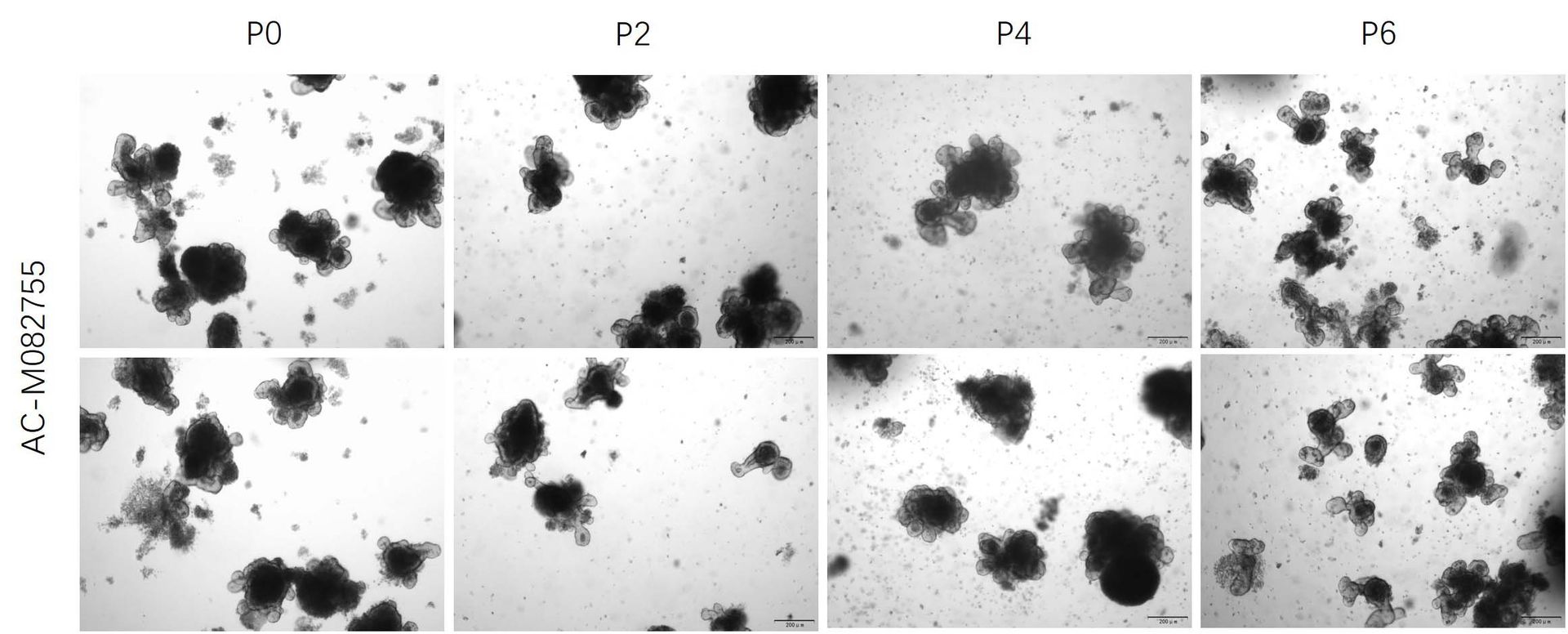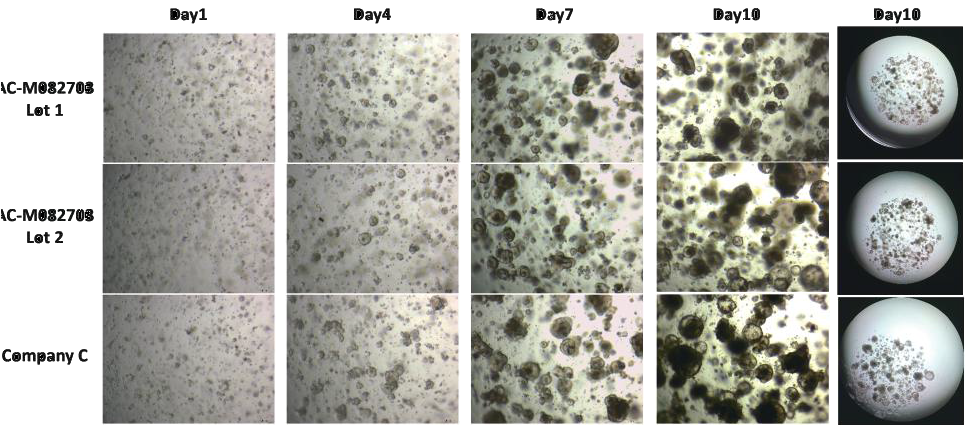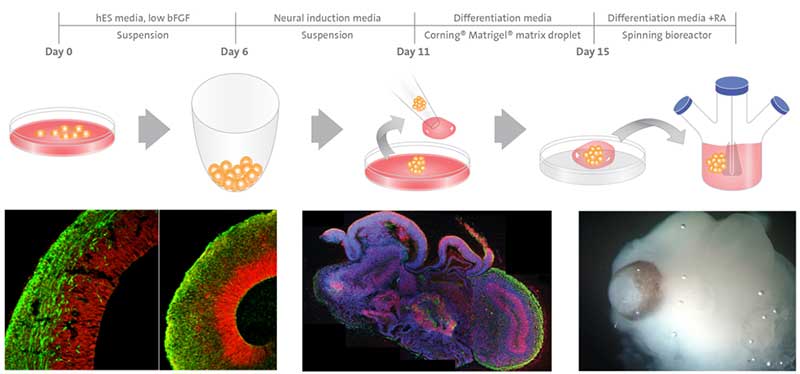MATRIX DYNAMICS: Unraveling Basement Membranes and Matrigengel Matrix Organoid Culture in Tissue Science
Unveiling the Crucial Role of Basement Membranes: Insights into Structure and Matrigengel Matrix Organoid Culture
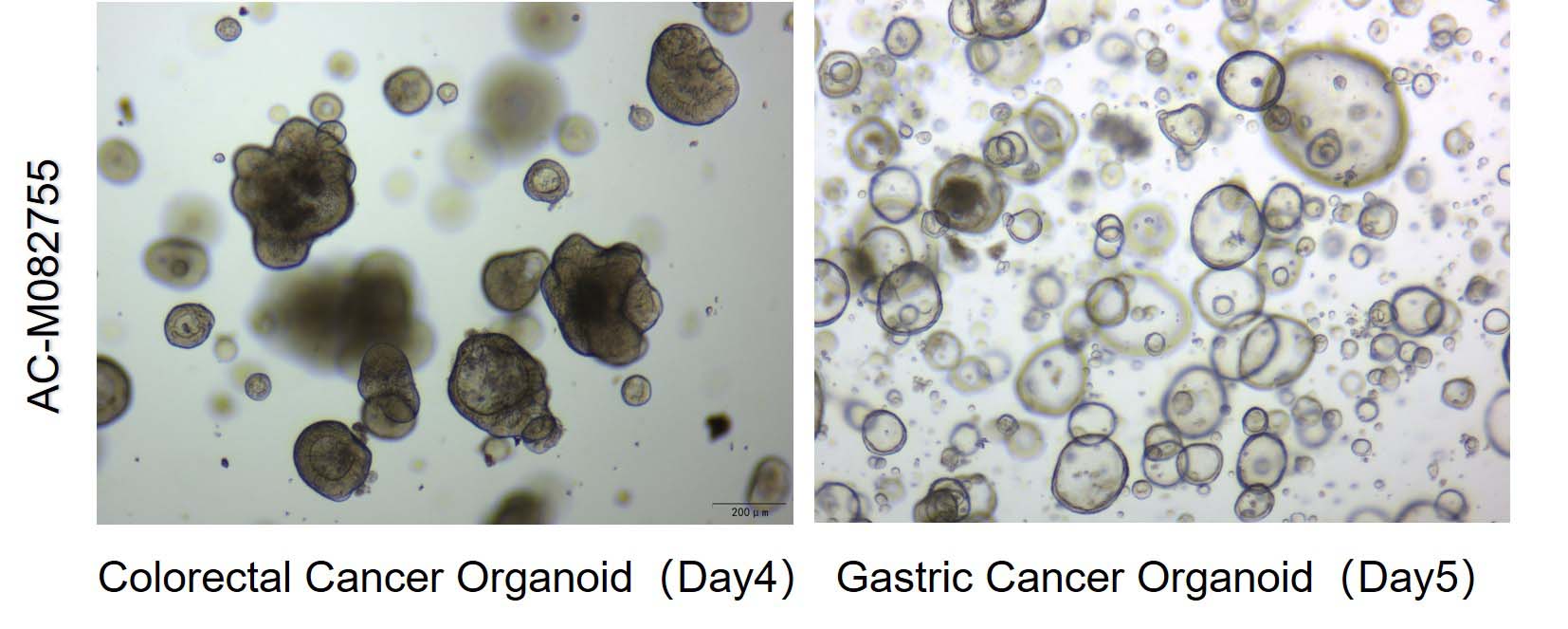
Colorectal cancer organoids, gastric cancer organoids, and other human tumor organoids are cultured using a 70% Matrigel Matrix Organoid Culture.
Introduction:
Basement membranes represent continuous sheets of a specialized extracellular matrix, playing a pivotal role as interfaces between diverse cell types, including muscle, neuronal, epithelial, and endothelial cells, in conjunction with adjacent stroma. This intricate matrix serves as an indispensable component in tissue organization, providing scaffolding and support for cellular growth and layer formation.
Key Features of Basement Membranes:
- Scaffold for Tissue Organization: Basement membranes form the structural foundation essential for the organization of tissues, contributing to the architecture that supports cellular growth and layer formation.
- Influence on Cellular Mechanisms: Beyond their structural role, basement membranes significantly impact cellular mechanisms such as adhesion, migration, proliferation, and differentiation, thereby regulating vital processes in tissue development.
- Dynamic Degradation and Regeneration: Selective degradation and regeneration of basement membranes occur during development and wound healing, establishing the base scaffold necessary for tissue reconstruction.
- Barrier Against Metastatic Invasion: Basement membranes act as a formidable barrier, preventing invasion by metastatic tumor cells and playing a crucial role in cancer metastasis prevention.
Matrigengel Matrix Organoid Culture:
Matrigengel Matrix Organoid Culture stands out as a soluble form of basement membrane, purified from gene-edited mouse tumor cells cultivated in LDEV-free mouse populations. Upon reconstitution at 37℃, it primarily comprises laminin, collagen IV, entactin, and heparin sulfate proteoglycan, mimicking the original basement membrane form.
Applications:
- Research Advancements: Matrigengel Matrix Organoid Culture provides a valuable tool for researchers exploring basement membrane biology, offering insights into cellular behavior and tissue reconstruction.
- In Vitro Modeling: The solubility and composition of Matrigengel make it an ideal substrate for creating in vitro models, facilitating the study of cellular responses and behavior in a controlled environment.
- Therapeutic Potential: Understanding the properties of Matrigengel may unlock therapeutic avenues, particularly in the context of tissue engineering and regenerative medicine.
Conclusion:
The comprehensive understanding of basement membranes and the innovative application of Matrigengel Matrix Organoid Culture contribute to our knowledge of tissue dynamics and offer promising avenues for further research and therapeutic development. These insights enhance our grasp of cellular interactions, opening doors to advancements in fields ranging from developmental biology to cancer research.
Exploring the Matrix: Unveiling the Crucial Role of Basement Membranes and Matrigengel Matrix Organoid Culture
Introduction:
Basement membranes are dynamic entities, serving as continuous sheets of a specialized extracellular matrix. Their pivotal role lies in acting as interfaces between a variety of cell types, including muscle, neuronal, epithelial, and endothelial cells, intricately connected with adjacent stroma. This complex matrix stands as an indispensable component in tissue organization, providing the essential scaffolding and support necessary for cellular growth and the formation of cellular layers.
Key Features of Basement Membranes
- Scaffold for Tissue Organization: Basement membranes form the structural backbone crucial for the organization of tissues. They contribute to the architectural framework that supports cellular growth and the formation of distinct cellular layers.
- Influence on Cellular Mechanisms: Beyond their structural role, basement membranes exert a significant influence on cellular mechanisms such as adhesion, migration, proliferation, and differentiation. This regulation plays a vital role in tissue development and homeostasis.
- Dynamic Degradation and Regeneration: Basement membranes undergo selective degradation and regeneration processes during development and wound healing. This dynamic behavior establishes the foundational scaffold necessary for effective tissue reconstruction.
- Barrier Against Metastatic Invasion: Acting as a formidable barrier, basement membranes play a crucial role in preventing the invasion of metastatic tumor cells. This protective function is essential in the prevention of cancer metastasis.
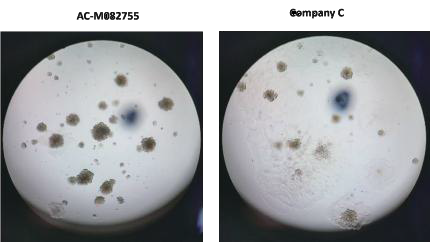 In contrast to a comparable product from Company C, organoids cultured with Matrigel Matrix Organoid Culture displayed a reduced tendency to adhere to the wall. This characteristic is beneficial for maintaining the morphology of the organoids.
In contrast to a comparable product from Company C, organoids cultured with Matrigel Matrix Organoid Culture displayed a reduced tendency to adhere to the wall. This characteristic is beneficial for maintaining the morphology of the organoids.
Matrigengel Matrix Organoid Culture:
Matrigengel Matrix Organoid Culture emerges as a soluble form of the basement membrane, meticulously purified from gene-edited mouse tumor cells cultivated in LDEV-free mouse populations. Upon reconstitution at 37℃, it primarily consists of laminin, collagen IV, entactin, and heparin sulfate proteoglycan, faithfully mimicking the original basement membrane form.
Various batches of Matrigel Matrix (GFR Phenol Red Free) and a comparable product from Company C yield consistent results, demonstrating their ability to support the growth of human colon cancer organoids.
Applications:
- Research Advancements: Matrigengel Matrix Organoid Culture serves as a valuable tool for researchers delving into basement membrane biology. It provides profound insights into cellular behavior and contributes to our understanding of tissue reconstruction dynamics.
- In Vitro Modeling: The solubility and composition of Matrigengel make it an ideal substrate for creating in vitro models. This facilitates the study of cellular responses and behavior in a controlled environment, aiding researchers in uncovering intricate details of cellular interactions.
- Therapeutic Potential: Understanding the unique properties of Matrigengel opens up therapeutic avenues, especially in the fields of tissue engineering and regenerative medicine. The application of this organoid culture holds promise for innovative therapeutic interventions.
Conclusion:
The comprehensive exploration of basement membranes, coupled with the innovative application of Matrigengel Matrix Organoid Culture, significantly contributes to our understanding of tissue dynamics. These insights not only offer promising avenues for further research but also hold the potential to revolutionize therapeutic developments across diverse fields, from developmental biology to cancer research. The intricate interplay between cellular interactions and matrix dynamics unfolds new opportunities for advancements in science and medicine.
MATRIX DYNAMICS: Unraveling Basement Membranes and Matrigengel Matrix Organoid Culture in Tissue Science
Introduction:
The intricate world of matrix dynamics involves a comprehensive exploration of basement membranes and the revolutionary Matrigengel Matrix Organoid Culture. Acting as continuous sheets of specialized extracellular matrices, basement membranes play a pivotal role in tissue organization, serving as crucial interfaces between various cell types and adjacent stroma. This introduction sets the stage for understanding the profound impact of these matrices on cellular dynamics and lays the groundwork for exploring the innovative Matrigengel Matrix Organoid Culture.
Key Features of Basement Membranes:
- Scaffold for Tissue Organization: Basement membranes go beyond being mere structural elements; they form the essential scaffold that dictates the organization of tissues. Their contribution to the architectural framework provides vital support for cellular growth and the intricate formation of cellular layers.
- Influence on Cellular Mechanisms: Delving deeper into their role, basement membranes exert significant influence over cellular mechanisms such as adhesion, migration, proliferation, and differentiation. This regulatory role is fundamental to tissue development and homeostasis.
- Dynamic Degradation and Regeneration: The dynamic nature of basement membranes is evident in their selective degradation and regeneration during developmental processes and wound healing. This dynamic behavior lays the foundation for effective tissue reconstruction.
- Barrier Against Metastatic Invasion: Basement membranes emerge as formidable barriers, playing a crucial role in preventing the invasion of metastatic tumor cells. Their protective function is indispensable in the battle against cancer metastasis.
Matrigengel Matrix Organoid Culture:
Matrigengel Matrix Organoid Culture takes center stage as a soluble form of basement membrane. Refined from gene-edited mouse tumor cells within LDEV-free mouse populations, its reconstitution at 37℃ primarily consists of laminin, collagen IV, entactin, and heparin sulfate proteoglycan, faithfully mirroring the original basement membrane form.
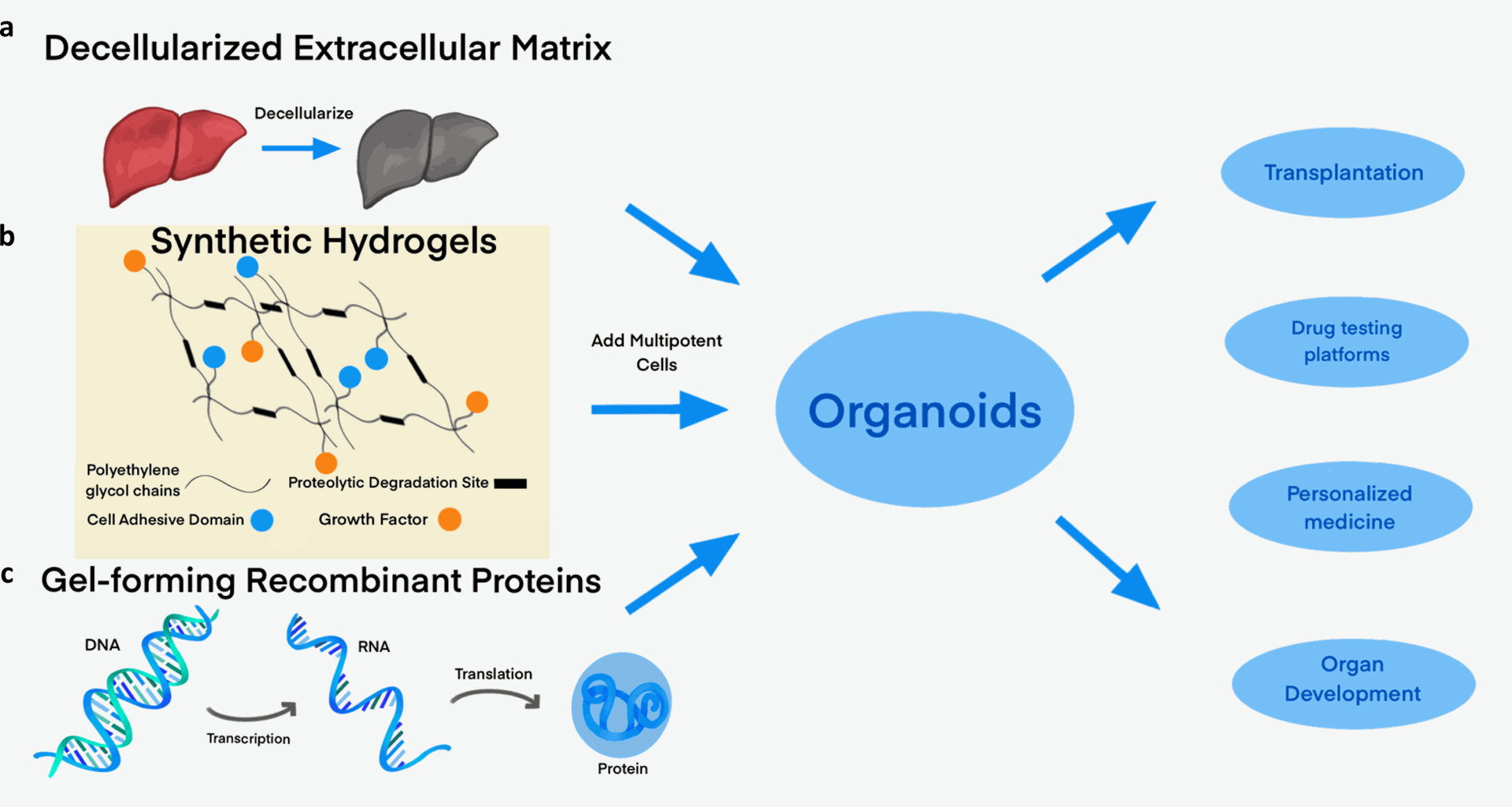
Applications:
- Research Advancements: Matrigengel Matrix Organoid Culture emerges as a beacon for researchers exploring the nuances of basement membrane biology. Its invaluable contribution provides profound insights into cellular behavior, offering a dynamic perspective on tissue reconstruction dynamics.
- In Vitro Modeling: The solubility and composition of Matrigengel make it an ideal substrate for creating in vitro models. This innovation facilitates the study of cellular responses and behavior in a controlled environment, unlocking intricate details of cellular interactions.
- Therapeutic Potential: Understanding the unique properties of Matrigengel paves the way for promising therapeutic avenues, especially in the realms of tissue engineering and regenerative medicine. The potential applications of this organoid culture hold promise for groundbreaking therapeutic interventions.
Conclusion:
As we navigate the complexities of matrix dynamics, the interplay between basement membranes and Matrigengel Matrix Organoid Culture unveils new horizons in tissue science. This comprehensive exploration not only enriches our understanding of tissue dynamics but also propels us toward innovative applications in research and therapeutics. The synergy between cellular interactions and matrix dynamics in this dynamic field promises a future where our grasp of science and medicine reaches unprecedented heights.
